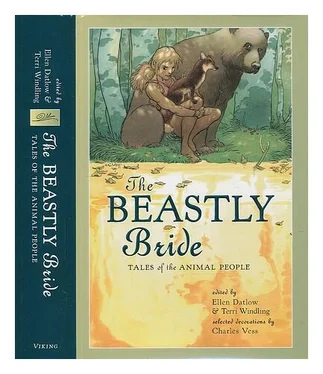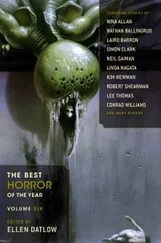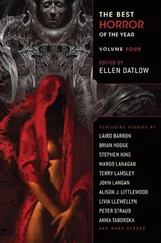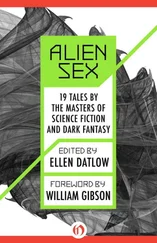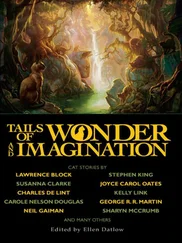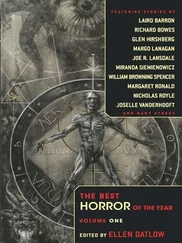Ellen Datlow - The Beastly Bride
Здесь есть возможность читать онлайн «Ellen Datlow - The Beastly Bride» весь текст электронной книги совершенно бесплатно (целиком полную версию без сокращений). В некоторых случаях можно слушать аудио, скачать через торрент в формате fb2 и присутствует краткое содержание. Город: New York, Год выпуска: 2010, ISBN: 2010, Издательство: Penguin Group US, Жанр: Ужасы и Мистика, Фэнтези, на английском языке. Описание произведения, (предисловие) а так же отзывы посетителей доступны на портале библиотеки ЛибКат.
- Название:The Beastly Bride
- Автор:
- Издательство:Penguin Group US
- Жанр:
- Год:2010
- Город:New York
- ISBN:978-1-101-18617-6
- Рейтинг книги:3 / 5. Голосов: 1
-
Избранное:Добавить в избранное
- Отзывы:
-
Ваша оценка:
- 60
- 1
- 2
- 3
- 4
- 5
The Beastly Bride: краткое содержание, описание и аннотация
Предлагаем к чтению аннотацию, описание, краткое содержание или предисловие (зависит от того, что написал сам автор книги «The Beastly Bride»). Если вы не нашли необходимую информацию о книге — напишите в комментариях, мы постараемся отыскать её.
The Beastly Bride — читать онлайн бесплатно полную книгу (весь текст) целиком
Ниже представлен текст книги, разбитый по страницам. Система сохранения места последней прочитанной страницы, позволяет с удобством читать онлайн бесплатно книгу «The Beastly Bride», без необходимости каждый раз заново искать на чём Вы остановились. Поставьте закладку, и сможете в любой момент перейти на страницу, на которой закончили чтение.
Интервал:
Закладка:
In Japan, we find a number of animal shape-changers among the yōkai , supernatural spirits that range from deadly demons to mischievous tricksters. The tanuki is a kind of shape-shifting raccoon dog, jolly and comical, often pictured with testicles so big that they are slung over his back. The mujina is a nastier, devious fellow whose primary animal form is the badger, but who also takes the form of a faceless ghost to terrify mortals. The bakeneko is a cat shape-shifter; the inugami is a dog spirit; and the most famous of the yōkai are the kitsune , who are shape-shifting foxes. Kitsune are known for disguising themselves as attractive mortals (of either sex), in which form they seduce and even sometimes marry human men and women. In most stories the kitsune are dangerous, and relations with them lead to madness or death — and yet some kitsune , the zenko (good foxes), are said to be wise, intelligent creatures, often poetic and scholarly by nature, who make faithful spouses and are good parents to their half-human, half-animal children.
In Africa, we find shape-shifting lion- and hyena-people with many of the same traits as the kitsune . In a Mbundu tale, a young lioness is dressed and groomed by her lion kin until she resembles a stately, enticing young woman. She marries a wealthy man, intending to kill him as he sleeps and steal his cattle away, but a child witnesses her nightly transformations and blows the whistle. In Native American legends, Deer Woman is a sacred being but also dangerous. In one tale from the Lakota tribe, a young man walking far from camp meets a beautiful maiden in the woods. It is (he thinks) the very woman he’s been courting, who has previously rejected him — but now she’s smiling flirtatiously, looking enchanting in a deerskin robe. As they talk, he playfully loops the braided rope he carries around her waist. whereupon she panics and turns to flee, shifting into her true deer shape. The rope holds her fast. “Let me go!” she cries. “If you do, I’ll give you magical power!” The young man releases her warily, and Deer Woman disappears through the wood. Then he vomits profusely, for he’s sick with the knowledge that if he had carried on with making love, he would have gone mad — like the other young men who’d encountered Deer Woman before him. Afterward, he lives alone and is plagued by fits of wild, deerlike behavior. Deer Woman keeps her promise, however, and gives him a magical ability: his skill with horses and other four-footed creatures is unsurpassed.
The Elk Man is another dangerous, seductive shape-shifter in Native America myth, and “elk medicine” could be used as an aphrodisiac or as a charm to attract the opposite sex. In an Elk Man tale from the Pawnee tribe, a handsome young man has the ability to attract any woman he desires, and soon there are only a few women left with their reputations intact. The other men decide to be rid of him. They persuade his reluctant brother to help them, promising him riches in return. The handsome young man is duly killed, but his sister steals his head and an arm, hiding them in the forest nearby. The young man regenerates himself with these parts, and comes home to his brother’s tepee. He’s not angry with the brother but with the tribe, who have not yet fulfilled their side of the bargain, and he goes to the council tent to demand the wealth that his brother was promised. Fearful now, the council produces many horses, tepees, and fine blankets. The young man takes them home, and the siblings now live in luxury. After that, the narrative concludes, the young man “fascinated all the women so much there was not a single good woman left in that tribe. And then it was clear the young man was really an elk, and it was beyond their power to kill him, and neither could they put a stop to his attraction for women. They finally gave in and said no more. That is all.”
When human beings have the power to shape-shift at will, it is either a sign that they’re not as human as they appear (as in the stories of Deer Woman and Elk Man), or the shifter is a shaman, a healer, or a witch. The brujos and brujas of Mexico, for example, are believed to have the power to transform themselves into dogs or donkeys or turkeys, and the sorcerers of West Africa plague their enemies by assuming the shape of owls. The skin-walkers of the Navajo tribe can take on any animal shape, while the jaguar shamans of the Amazon draw magic from intense engagement with a single patron animal. Students of magic seeking to gain healing, prophetic, or shamanic powers sometimes undergo a ritual metamorphosis into one or more animal shapes in order to gain an understanding and mastery of the natural world. In Arthurian lore, Merlin goes mad after the Battle of Arderydd and flees into the forest, where he lives with the wild boars and the wolves for a long period of time. During this time of madness (a common part of shamanic initiation the world over), he learns to shape-shift into animal form, to understand animal languages, to control the elements, to foretell the future, and to perform other magical arts. The Irish tell a similar tale of Suibhne, a warrior cursed in battle and forced to flee into the wilderness. Shaped as a bird, he wanders for many years in a state of anguish and madness — but by the time he returns home again, transformed back into his own human shape, he has gained certain magical powers and a strong rapport with the beasts of the wood. Other stories in which metamorphosis comes about as the result of a curse have less positive outcomes than Suibhne’s, however, for humans forced into animal shape are often tragic or horrific figures. The werewolves of European folklore, or the were-tigers of India, or the were-jackals of the Middle East rarely regain their humanity; they are outcasts, shunned and feared by other men and cursed by God.
Human shape-shifting in fairy tales is usually involuntary and calamitous, resulting from a stepparent’s curse, a fairy’s punishment, or some other dark enchantment. In “Brother and Sister,” from the tales of the Brothers Grimm, two siblings flee their wicked stepmother through a dark and fearsome forest. The path of escape lies across three streams, and at each crossing the brother stops, intending to drink. Each time his sister warns him away, but the third time he cannot resist. He bends down to the water in the shape of a man and rises again in the shape of a stag. Thereafter, the sister and her brother-stag must live in a lonely hut in the woods. but eventually, with his sister’s help, the young man resumes his true shape. In “The White Deer,” from the French fairy tales of Madame d’Aulnoy, a princess is cursed in infancy by a fairy who had been insulted by the king and queen. Disaster will strike, says the fairy, if the princess sees the sun before her wedding day. Many years later, as she travels to her wedding, a ray of sun penetrates her carriage. The princess turns into a deer, jumps through the window, and disappears. She is then hunted and wounded by her own fiancé as she roams sadly through the forest.
There are many, many fairy tales where the hero or heroine marries an animal: a frog, a snake, a bear, a cat, a rat, or an animal-like monster. Often they’ve been obliged to do so by poverty, honor, or a parent’s fecklessness. Among the thousands of Animal Bride and Bridegroom stories to be found in cultures all around the world, “Beauty and the Beast” is probably the one that most of us know best today. “Beauty and the Beast” is not a folktale — it was written by Madame Gabrielle-Suzanne Barbot de Villeneuve in the eighteenth century — but it draws its plot from older stories in the Animal Bride/ Bridegroom tradition, including the Greek myth of “Cupid and Psyche,” the “loathly lady” stories of medieval literature, and “East of the Sun, West of the Moon,” a popular Scandinavian folktale. In the Scandinavian story, the heroine must actually marry her beast (a big white bear) at the beginning of the story. Each night, by dark, he comes to their marriage bed in what seems to be a human form — but his wife may not light the lamp to see if she is married to a man or to a monster. She breaks this taboo, and the white bear disappears from sight. Having grown fond of him by now, she sets off on a journey that takes her “east of the sun, west of the moon,” where she breaks the spell that binds him and restores his humanity.
Читать дальшеИнтервал:
Закладка:
Похожие книги на «The Beastly Bride»
Представляем Вашему вниманию похожие книги на «The Beastly Bride» списком для выбора. Мы отобрали схожую по названию и смыслу литературу в надежде предоставить читателям больше вариантов отыскать новые, интересные, ещё непрочитанные произведения.
Обсуждение, отзывы о книге «The Beastly Bride» и просто собственные мнения читателей. Оставьте ваши комментарии, напишите, что Вы думаете о произведении, его смысле или главных героях. Укажите что конкретно понравилось, а что нет, и почему Вы так считаете.
